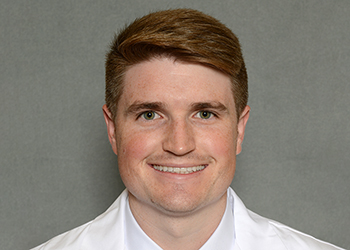 Internal Medicine Resident Andrew Girard, M.D. (PGY-2) One of the many challenges in providing health care is to be mindful of how a patient’s physical health is deeply connected to their mental outlook. And when a patient reveals an intent to take their own life, it can be an alarming experience for the entire health care team.
Internal Medicine Resident Andrew Girard, M.D. (PGY-2) One of the many challenges in providing health care is to be mindful of how a patient’s physical health is deeply connected to their mental outlook. And when a patient reveals an intent to take their own life, it can be an alarming experience for the entire health care team.
In our Providing Access to Healthcare (PATH) Clinic—a nurse-led transitional care clinic that treats uninsured patients who have uncontrolled diabetes and assesses patients for some behavioral health needs—a routine patient encounter escalated quickly when Internal Medicine resident Andrew Girard, M.D., noted a high score on behavioral health assessment, indicating severe depressive symptoms and potential suicidal ideation.
According to Claire Harris, LICSW-S, who was asked to do subsequent evaluation, this score was not an unusual occurrence. However, Dr. Girard’s unique desire to understand and empathize with the patient is something she says she does not see often.
She commends the way he calmly answered questions, intentionally listened, and effectively communicated with the patient. His behavior created a calm and comfortable environment that fostered open dialogue. With consent, he invited the family into the discussion for additional support, ultimately convincing the patient to seek further help in the emergency department.
“It is very easy for us to panic in these situations, but that was not the case. I am glad to have had Dr. Girard on my team. This was a perfect example of how crucial interprofessional collaboration is for patients.”
As we observe National Mental Health Awareness Month we are so grateful for this example of life-saving collaboration. Thank you, Claire, for sharing this story with us. And thank you, Dr. Girard, for providing compassionate care that not only improved the mental wellness of the patient, but the wellness of the family and colleagues you worked with.